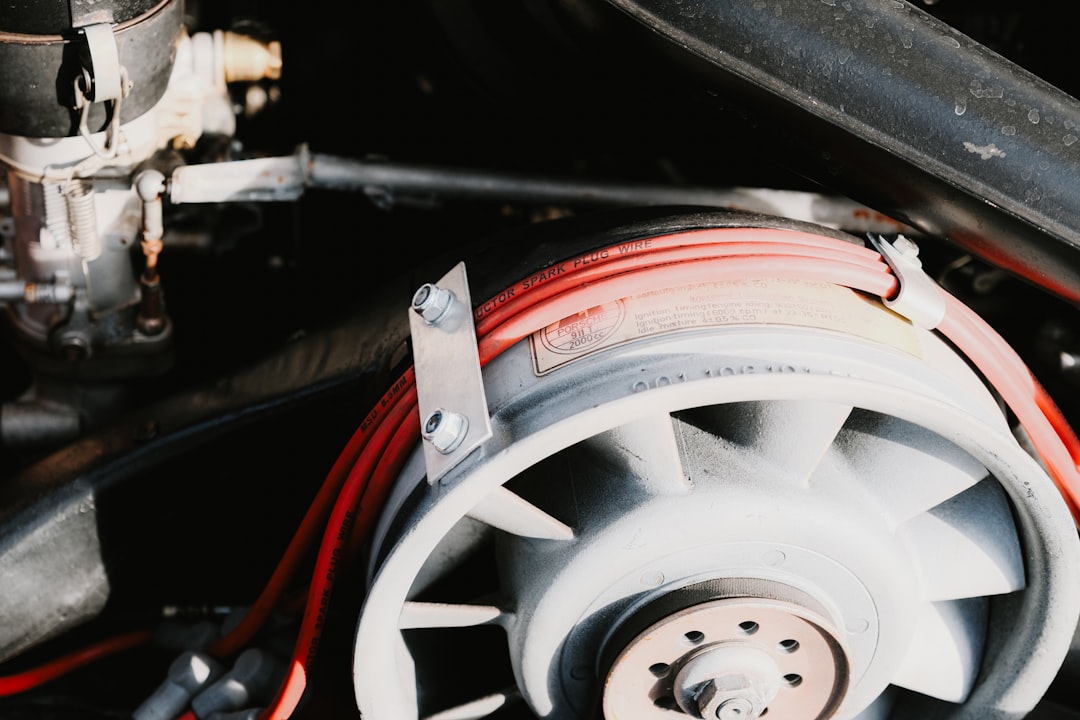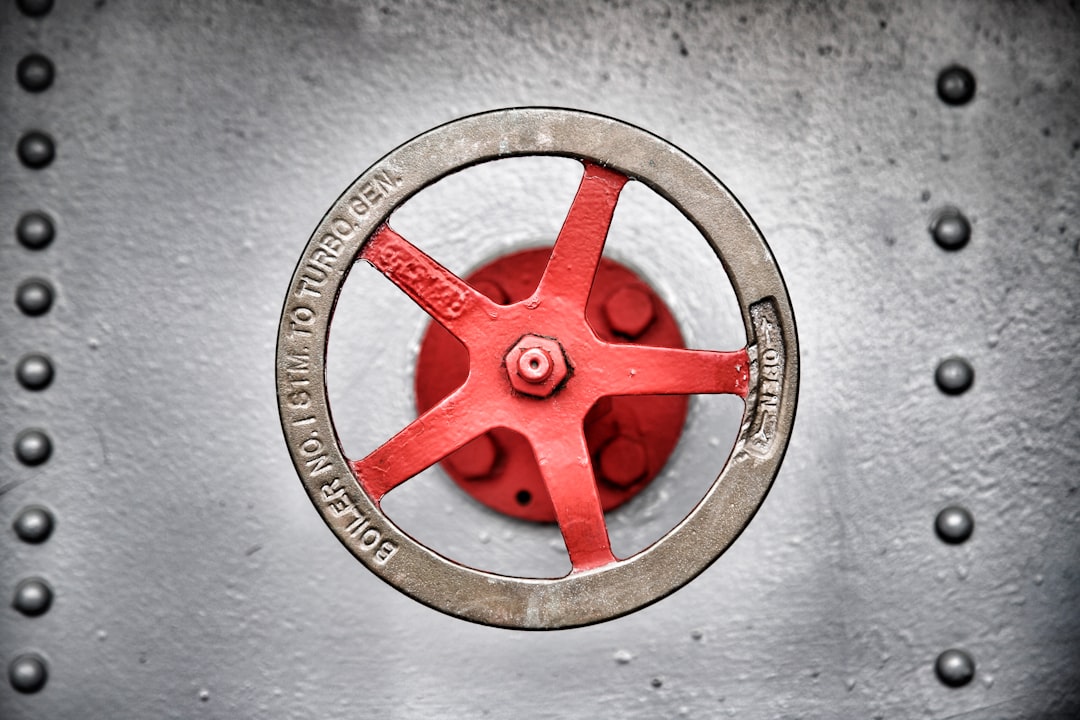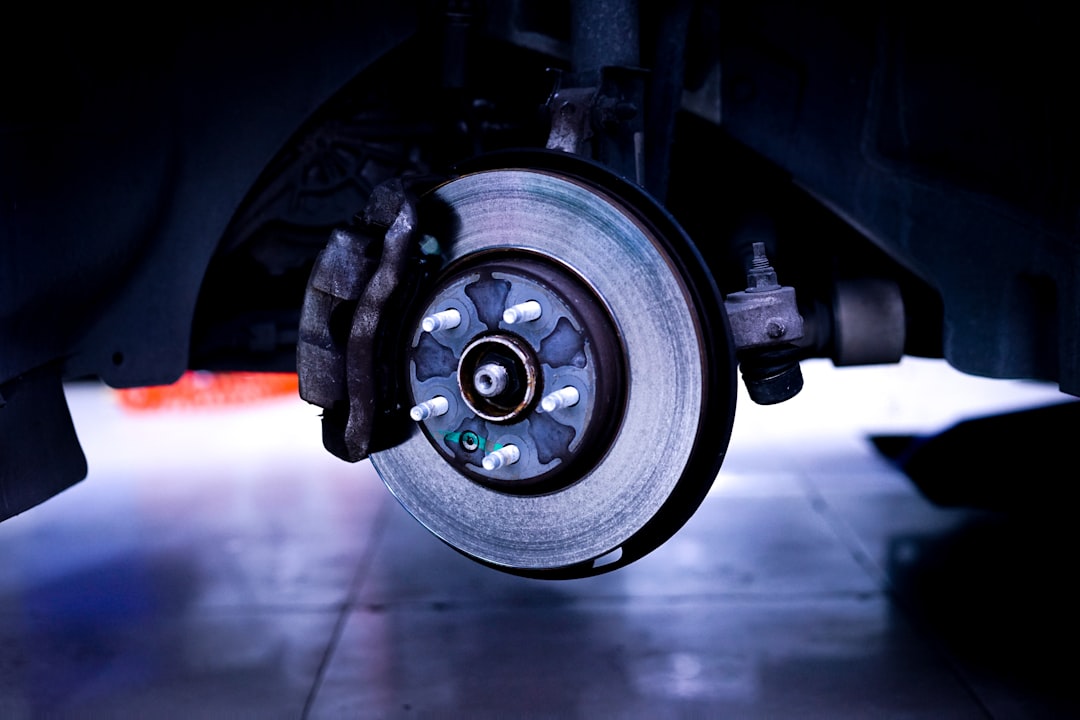

Engage prospects with a scan and streamline customer engagement with FREE QR code marketing tools by Sona – no strings attached!
Create a Free QR CodeFree consultation

No commitment

Engage prospects with a scan and streamline customer engagement with FREE QR code marketing tools by Sona – no strings attached!
Create a Free QR CodeFree consultation

No commitment
Wheel repair services are central to maintaining vehicle performance, safety, and aesthetics. Providers often confront the challenge of engaging digital-first customers while capturing the full value of each interaction. Missed touchpoints like anonymous inquiries or untracked walk-ins introduce gaps, leading to missed high-value prospects and difficulty nurturing leads when traditional phone or paper-based systems fall short.
With the expansion of QR code technology, wheel repair businesses can close these gaps, creating instant, measurable connections between physical service and digital engagement. QR codes simplify information access, streamline appointment requests, and embed traceability into every customer touchpoint, from drive-in scenarios to aftercare follow-ups. As a result, lost opportunities due to untracked visits or forgotten calls transition to actionable, data-driven marketing.
This article examines the key challenges wheel repair services face in capturing demand and optimizing conversion, and shows how leveraging QR codes can meet these needs by enriching customer journeys, illuminating high-intent prospects, and integrating seamlessly into day-to-day workflows.

Instant engagement starts the moment a wheel repair customer sees your brand or walks into your shop. In many operations, those first moments are still tied to analog processes such as paper brochures, photocopied price sheets, and clipboards with handwritten forms. These materials are hard to track, easy to misplace, and offer no direct connection to your booking system or CRM. QR codes turn those fleeting encounters into digital entry points, prompting customers to scan, self-serve, and convert without waiting in line or dialing a number during business hours.
Replacing outdated materials with QR-enabled moments creates measurable, low-friction interactions. A QR on a window sign can route passersby to a quick quote tool. A QR on a repair estimate can let a customer approve work while they sit in the waiting area. A QR on a receipt can request a review and subscribe the customer to seasonal safety reminders. With a unified platform such as Sona QR, every scan can be tracked, tagged by context, and synced to your CRM so future outreach is timely and relevant. The result is a faster, modernized customer experience that captures demand at the source and lowers operational overhead.

Wheel repair shops face a consistent set of visibility challenges. You may not know which prospects saw your pricing sheet, who visited your website after picking up a flyer, or why leads disappear between initial interest and booking. Without strong tracking and a fast path to action, shops overspend on broad marketing while missing time-sensitive decisions such as a customer choosing between repair and replacement. QR codes address these gaps by turning offline impressions into measurable online actions and by guiding customers through the steps needed to complete a purchase.
Speed and simplicity matter in this vertical. Drivers often seek rapid solutions after curb rash, pothole damage, or cosmetic scuffs. They want clarity on options, timelines, and cost. QR codes give them a one-scan path to a guided estimate, image upload, or direct booking, no app required. For your team, dynamic QR destinations mean prices, availability, and offers stay current without reprinting materials, which saves money and keeps messaging aligned. With analytics dashboards such as Sona QR’s, your marketing becomes data-driven instead of guesswork.

Not every QR serves the same purpose. Selecting the right format ensures customers land on the destination that best matches their intent: request a quote, schedule an appointment, contact support, or leave a review. In wheel repair, formats that collect details and accelerate service are the most valuable, followed by formats that simplify re-engagement.
Static codes are fine for permanent resources such as shop hours. Dynamic codes are better for campaigns and operational workflows because they allow edits and full analytics. With Sona QR, you can generate and manage any format from one dashboard, then track performance by placement and campaign.
Growth hides in the cracks between your physical materials and your digital workflows. A spotless shop with helpful signage still loses opportunities when those signs do not connect to a fast digital action such as booking, uploading photos, or requesting a quote. Likewise, invoices and work orders that do not prompt reviews or referrals miss chances to turn satisfied customers into advocates. Audit every touchpoint, then introduce QR codes where attention is already high and action is likely.
Prioritize placements that align with customer intent. At the service bay entrance, customers wonder about time and cost. In the waiting lounge, they are ready to approve work or schedule add-ons. At pickup, they are primed to leave a review, ask about warranty, or consider future services such as seasonal wheel storage. Use QR codes that match these intents and you will transform ordinary surfaces into high-performance conversion assets.
By reviewing analytics to see which codes drive the most scans and conversions, you can reduce wasted spend and focus on the assets that consistently produce leads. Rotate underperforming placements and test new CTAs until each zone of your shop contributes measurable pipeline.

QR use cases for wheel repair are strongest when they remove friction and create data. The best campaigns make it effortless for customers to tell you what they need while giving your team the context required to respond fast. From first glance to final review, the goal is to convert anonymous interest into a known, nurturable contact with clear intent.
Three practical implementations deliver outsized impact. Each one maps a common pain point to a simple QR-powered flow, then feeds the results back into your CRM for remarketing and service follow-up.
Each scenario converts a previously anonymous or manual interaction into an actionable digital event. The shop gains clarity on demand, customers save time, and both sides benefit from cleaner data and faster cycle times.
Every scan is a signal. The destination, placement, and timing of a QR tell you something about the person behind the camera: whether they need emergency help for a bent rim or are casually exploring options to freshen curb rash. By deploying unique QR codes across your shop, print materials, and mobile vans, you can create natural segment labels without asking a customer to self-categorize.
Use segmentation to align offers with intent. A driver who scanned a Same-day straightening quote QR at a mobile van needs urgency and availability. A customer who scanned a Wheel finishing gallery QR while waiting for a tire rotation may respond to cosmetic upgrades and bundle discounts. Sync these audiences to your CRM and ad platforms to automate follow-up that feels helpful, not generic.
The more intentional your tagging, the richer your audience profiles become. Over time, your team will spot patterns such as higher weekend interest in cosmetic services or weekday demand for bent rim straightening. That insight helps you refine both marketing and staffing.
A multi-channel strategy only works when offline impressions and online actions are connected. In wheel repair, customers encounter your brand in parking lots, on service counters, in dealership waiting rooms, on Instagram, and at local car meets. QR codes unify these moments by linking every surface to a digital journey you can track, optimize, and scale.
Think of QR codes as the onramp to your digital marketing engine. Whenever a customer is ready to take the next step, a code should be within reach that leads to the right destination: a quote, a booking, an explainer, or a review page. With a centralized platform like Sona QR, you can manage all codes, monitor performance in one dashboard, and sync scan data to your CRM and ad tools for continuous optimization.
As you integrate QRs across channels, map the buyer journey from awareness to decision. Use consistent language and CTAs, then align offers with each step so the next action is always obvious and rewarding.
Launching a QR program is easier when you break it into clear, repeatable steps. Start with one or two high-impact use cases such as quote requests and post-service reviews, then expand into add-on services and multi-channel placements as data accumulates. The following checklist is tailored to wheel repair operations and can be executed by small teams without heavy technical lift.
Use these steps to move from idea to measurable outcomes. Each step focuses on clarity of goal, smart selection of QR type, design and scannability, high-impact placements, and disciplined measurement. With Sona QR, you can generate codes, manage destinations, and track results from one interface, making iteration fast and grounded in data.
Start by defining a clear business outcome. For example, reduce phone traffic and missed calls by 30 percent through QR-powered bookings, or increase Google reviews by 40 percent with QRs on receipts. Align your use case with the moment customers are most ready to act: in the waiting area for approvals, at the counter for quotes, or at pickup for reviews.
Pick only one or two objectives for your first sprint. Strong candidates in wheel repair include same-day estimate intake with photo upload, post-service review capture, and insurance claim initiation. A narrow focus accelerates learning and builds internal confidence as you demonstrate quick wins.
Match the QR type to your goal. Use dynamic codes when you want editability, analytics, and retargeting. Use static codes for permanent resources that never change. For most wheel repair campaigns, dynamic codes are the right choice because pricing, offers, and forms evolve.
Consider the data you need at the destination. If your priority is estimate speed, choose a smart form that collects photos and essentials. If the goal is repeat engagement, a vCard or loyalty sign-up form may fit better. Sona QR supports all common formats and makes it simple to manage them in one place.
Design your QR so it is unmistakable and on-brand. Add your logo, use high contrast, and frame it with a clear CTA such as Scan to get your estimate. Scannability beats aesthetics when they conflict, so test in real conditions: glossy counters, uneven lighting, and varied phone models.
Testing is critical before scale. Print samples in the sizes you will use. Check legibility from the expected scanning distance. Validate that the landing pages load fast on cellular networks and that forms are mobile-friendly. Small improvements such as larger codes or shorter CTAs can increase scan rates significantly.
Roll out your codes where they will be seen and used. Start in-store at the bay entrance, reception, and waiting area. Extend to invoices, estimates, and take-home cards. Use partner placements such as tire retailers and dealerships to capture offsite traffic. For mobile units, add decals to vans and portable displays for remote estimates.
Match placement to intent so the code always feels helpful rather than intrusive. Review placements weekly during the pilot period, then expand to direct mail, community events, and social content as the strongest performers emerge.
Measurement transforms QRs from a novelty into a revenue engine. Use Sona QR to track scans by time, location, and device. Tie scans to form fills, bookings, and invoices to prove impact. Monitor conversion rates and drop-off points in your funnel, then A/B test destinations, messages, and code designs.
Review performance weekly in the early stages, then monthly as programs mature. Retire underperforming CTAs, and lean into placements that consistently produce high scan-to-book rates. Feed insights to your staff so they can confidently promote the most effective codes during customer interactions.
Without rigorous tracking, it is impossible to know which physical campaigns drive real outcomes. Many shops rely on anecdotal evidence such as foot traffic or busy phones, but those signals do not connect to specific marketing assets or customer actions. QR analytics fill that gap by logging when, where, and how each scan occurs. When combined with website and CRM data, they provide a clear picture of the journey from first scan to booked repair and final review. See first-touch vs last-touch attribution models.
The key is to go beyond counting scans. You want to know whether a scan led to a quote request, whether that quote converted to a scheduled repair, and how quickly. By integrating Sona QR with your CRM, you can surface high-intent leads, assign follow-ups, and attribute revenue back to the code that started the conversation. That level of visibility gives you confidence to scale the placements and messages that pay off.
When you can say that QRs on post-repair receipts increased Google reviews by 30 percent, or that dynamic codes for estimates improved first-time appointment follow-through by 22 percent, you turn marketing from a cost center into a measurable growth lever.
The difference between average and exceptional QR performance comes down to discipline and creativity. Discipline ensures every code is unique, tagged, and measured. Creativity ensures customers see a clear reason to scan and feel rewarded when they do. Blend both and your shop will build a repeatable system for capturing demand across seasons and service lines.
Prioritize tips that fit your physical environment and customer behaviors. In wheel repair, codes on counter mats, waiting-room displays, invoices, and vehicle-ready tags see sustained engagement. Mobile vans and partner locations add reach. Educating staff to point out and explain QR benefits amplifies adoption without significant spend.
Consistency compounds results. As more customers scan, your data set grows, your messaging sharpens, and your cost per conversion drops.

Seeing how peers deploy QR codes can spark ideas for your own operation. The most effective examples convert a real-world moment into a clear digital action, then use data to refine future campaigns. Below are scenarios inspired by wheel repair providers of different sizes, each illustrating how simple changes drive measurable outcomes.
Large networks benefit from standardizing tactics across locations, while small shops can move quickly to test bold ideas. In all cases, the common thread is connecting the physical experience of wheel service to a digital path that captures intent, accelerates decisions, and fuels loyalty.
Partnerships amplify results. By collaborating with insurance companies, shops embedded QRs in claim packets so customers could upload documentation directly to the repair team. Post-service codes on receipts increased five-star feedback and advocacy, lifting local search visibility and referral volume.
QR codes have become essential connectors for the wheel repair industry, solving persistent problems of missed leads, untracked engagement, and fragmented campaigns. By embedding dynamic, measurable QR experiences at critical touchpoints, from shop floors and print pieces to digital channels, providers can convert walk-in traffic, follow up on high-value inquiries, and ensure no opportunity is lost.
The true value is a seamless, insight-driven customer journey that allows marketing and operations teams to identify gaps, act on intent signals, and continually optimize the service funnel. Modern QR management tools make every customer interaction actionable, ensuring each person from initial scan to review is engaged, nurtured, and measurable in driving revenue and reputation. Start creating QR codes for free, then use Sona to attribute scans to pipeline and revenue as your program scales.
QR codes have revolutionized the wheel repair services industry by transforming traditional customer interactions into seamless, measurable engagement opportunities. From simplifying appointment bookings and providing instant access to service histories to offering tailored maintenance tips, QR codes enhance customer acquisition and elevate the overall service experience. Imagine your customers scanning a code to receive personalized wheel care advice or exclusive discounts instantly—turning routine visits into loyal relationships.
With Sona QR, you can create dynamic, trackable QR codes in seconds that update in real time without the need to reprint materials. This means every scan provides valuable insights into customer behavior, enabling you to optimize marketing efforts and directly connect engagement to revenue growth. Start for free with Sona QR today and drive your wheel repair services business forward by turning every scan into a lasting customer connection.
Wheel repair involves assessing damage such as curb rash or bent rims, providing a quote often through quick digital forms, scheduling the repair, performing the service, and following up with customers for approval and reviews, all facilitated by streamlined digital tools like QR codes.
Wheel repair costs vary based on damage and service type, but shops often provide instant, guided estimates through QR code-enabled tools that capture wheel type, damage photos, and vehicle details to deliver accurate price ranges quickly.
Reliable wheel repair services can be found by scanning QR codes on local shop signage, promotional materials, or online directories that connect customers to booking forms and service details, enabling easy discovery and appointment scheduling.
Repairing wheels maintains vehicle safety and aesthetics at a lower cost and faster turnaround than replacement, with options like refinishing, straightening, and cosmetic touch-ups that preserve the original wheels and avoid the expense of new ones.
The latest technologies include QR code integration for instant customer engagement, dynamic pricing updates, digital estimate requests with photo uploads, automated CRM syncing for lead nurturing, and trackable marketing campaigns that optimize conversions.
Use Sona QR's trackable codes to improve customer acquisition and engagement today.
Create Your FREE Trackable QR Code in SecondsJoin results-focused teams combining Sona Platform automation with advanced Google Ads strategies to scale lead generation

Connect your existing CRM

Free Account Enrichment

No setup fees
No commitment required

Free consultation

Get a custom Google Ads roadmap for your business






Launch campaigns that generate qualified leads in 30 days or less.
